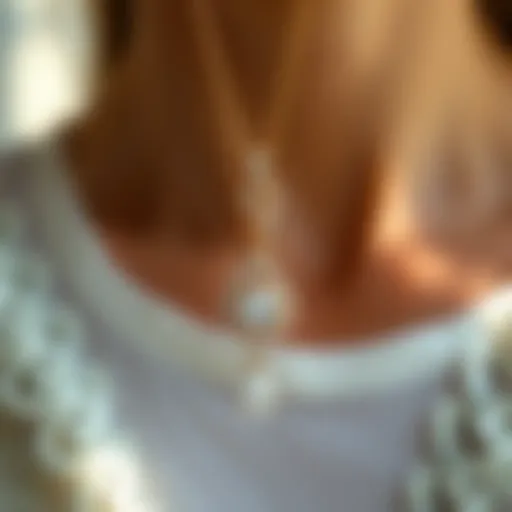Exploring the Ideal Carat Weight for Your Engagement Ring: A Comprehensive Guide
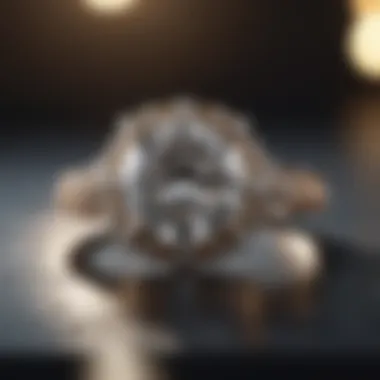

Overview of Carat Weight in Engagement Rings
When it comes to selecting the perfect engagement ring, establishing the ideal carat weight is a crucial decision that requires careful consideration. The carat weight not only influences the overall appearance of the ring but also plays a significant role in determining its value and symbolism. Understanding what constitutes a good carat for an engagement ring involves a blend of subjective preferences, budget constraints, and style considerations.
Factors Influencing the Choice of Carat Weight
Several factors come into play when determining the most suitable carat weight for an engagement ring. Personal style preferences play a vital role, as some individuals may prefer a larger, more eye-catching stone, while others might opt for a more subtle and delicate look. Budget considerations also play a crucial part in the decision-making process, as higher carat weights typically come with a heftier price tag. Balancing personal style with budgetary constraints is key to selecting a carat weight that aligns with both aesthetic preferences and financial feasibility.
Determining the Optimal Carat Weight
There is no one-size-fits-all answer to what constitutes an ideal carat weight for an engagement ring, as individual preferences vary widely. However, a commonly accepted range for a good carat weight falls between 0.5 to 1.5 carats for most engagement rings. Within this range, one can achieve a beautiful balance between size, quality, and affordability. It is essential to keep in mind that carat weight is just one of the 4Cs of diamond grading, alongside cut, clarity, and color. Each of these factors contributes to the overall beauty and value of the stone, so it's vital to consider them collectively when making your decision.
Conclusion
Selecting the right carat weight for an engagement ring is a highly personal decision that should take into account individual preferences, budget constraints, and the desired aesthetic outcome. By carefully weighing these factors and understanding the significance of carat weight in relation to overall ring quality, you can make an informed choice that resonates with both your style and sentiment.
Understanding Carat Weight
When delving into the realm of engagement rings, understanding carat weight becomes a crucial element in the decision-making process. Carat weight is a significant factor that dictates not only the visual size of the diamond but also its perceived value and rarity. In this article, the focus on understanding carat weight will illuminate key aspects such as the measurement of a diamond's weight and how carat weight influences the size of a diamond.
What Does Carat Weight Signify?
The measurement of a diamond's weight
The measurement of a diamond's weight is a fundamental concept in the world of gemstones as it directly influences the overall value of the diamond. Carat weight serves as a universal standard for assessing the mass of a diamond, with one carat equivalent to 200 milligrams. Understanding this measurement is essential for determining the size and, to some extent, the perceived value of a diamond. The significance of accurately measuring a diamond's weight lies in its role as a primary factor in pricing and evaluating gemstones, making it a crucial topic for discussion in this article.
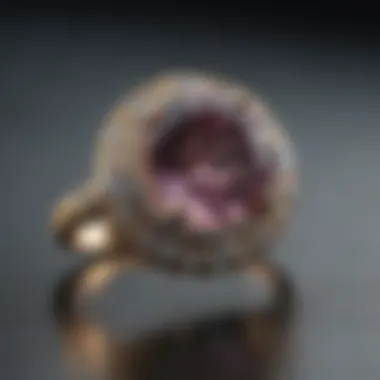

How carat weight influences the size of a diamond
Carat weight plays a pivotal role in determining the size of a diamond, with a direct correlation between the two aspects. As carat weight increases, so does the physical size of the diamond, resulting in a larger and more pronounced appearance. This relationship between carat weight and the size of a diamond is a key consideration for individuals looking to strike a balance between size, quality, and budget when selecting an engagement ring. Understanding how carat weight impacts the visual aesthetics of a diamond is essential for making an informed decision when choosing the perfect ring.
Factors Influencing Carat Choice
Personal preferences and style considerations
Personal preferences and individual style are significant influencers in the decision-making process when selecting the ideal carat weight for an engagement ring. Each person's taste and lifestyle factors into the choice, as personal style preferences often dictate the desired balance between the size and quality of the diamond. Considering these subjective elements is crucial for ensuring that the chosen carat weight reflects the wearer's personality and unique sense of style.
Impact of budget restrictions on carat selection
Budget restrictions play a vital role in determining the appropriate carat weight for an engagement ring. Financial considerations often guide individuals towards options that align with their monetary constraints without compromising on quality. The impact of budget restrictions on carat selection highlights the need for exploring alternatives that maximize value while staying within a specified financial range. Balancing budget limitations with carat weight choices is a delicate art that requires thoughtful consideration and strategic decision-making.
Relationship between carat weight and diamond quality
The relationship between carat weight and diamond quality is a nuanced aspect that necessitates a comprehensive understanding. While carat weight contributes to the overall value of a diamond, it is essential to recognize that quality goes beyond just size. Factors such as cut, color, and clarity also impact the overall appeal and brilliance of a diamond. Therefore, striking a harmonious balance between carat weight and diamond quality is essential for creating an engagement ring that not only impresses visually but also stands the test of time in terms of durability and aesthetic allure.
Determining the Optimal Carat Weight
In the realm of selecting the perfect engagement ring, the decision regarding the carat weight holds significant importance. It goes beyond mere numerical value to symbolize a deeper connection and commitment. The optimal carat weight is not just about the size of the diamond but the emotions and values it embodies. Understanding the optimal carat weight involves a careful balance between personal preferences, financial considerations, and the desire for timeless elegance.
Personal Preferences
Individual tastes and lifestyle factors
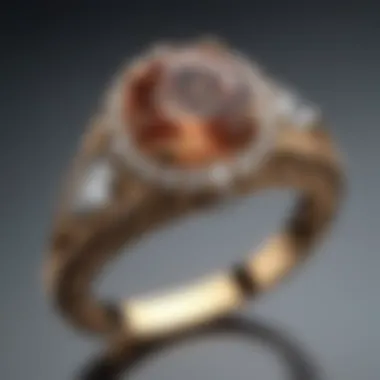

Individual tastes and lifestyle factors play a crucial role in determining the ideal carat weight for an engagement ring. Each person has unique preferences influenced by their lifestyle, personality, and aesthetic inclinations. Some may prefer a larger carat size to make a bold statement, while others may opt for a more modest size that aligns with their understated style. The individuality of these choices reflects one's personality and values, making the selection process a deeply personal and meaningful experience.
Desired balance between size and quality
Achieving the desired balance between size and quality is paramount when selecting the optimal carat weight. It is not merely about choosing the largest stone possible; rather, it involves finding a harmonious combination that meets both aesthetic and budgetary considerations. The balance ensures that the diamond not only appears visually appealing but also maintains high standards of quality and brilliance. Striking this equilibrium results in an engagement ring that embodies both beauty and value, reflecting the significance of the commitment it represents.
Budget Considerations
Aligning carat weight with financial constraints
Aligning the carat weight with financial constraints is a practical consideration that ensures a pragmatic approach to the engagement ring selection process. While it is tempting to focus solely on carat size, adhering to budget restrictions is essential for a well-informed decision. By aligning the carat weight with financial considerations, individuals can explore a range of options without compromising on quality or beauty. This alignment allows for a more customized and sustainable choice, reflecting fiscal responsibility without sacrificing elegance.
Exploring alternatives for maximizing value
Exploring alternatives for maximizing value presents a strategic approach to selecting the optimal carat weight. In addition to traditional diamond options, individuals can consider alternative gemstones or unique settings that elevate the overall aesthetic appeal of the ring. By exploring these alternatives, one can achieve a distinctive and personalized design that not only maximizes value but also showcases creativity and individuality. This exploration enhances the allure of the engagement ring, creating a timeless piece that transcends conventional expectations.
Trend Influences
Impact of current style trends on carat choices
The impact of current style trends on carat choices adds a dynamic element to the engagement ring selection process. Trends in jewelry design influence not only the aesthetics of the ring but also the cultural significance it carries. Staying attuned to these trends enables individuals to make informed decisions that reflect contemporary tastes and preferences. Whether following classic styles or embracing modern interpretations, being aware of trend influences ensures that the chosen carat weight remains relevant and appealing. By considering these influences, individuals can create an engagement ring that blends tradition with innovation, capturing the essence of timeless elegance in a modern context.
Practical Tips for Carat Selection
In this article, a crucial segment focuses on practical tips for choosing the right carat weight for an engagement ring. This section delves into key considerations that play a significant role in the decision-making process, offering essential guidance for individuals seeking the perfect balance between quality and significance in their engagement ring choice. Analyzing personal style, budget constraints, and the desire for timeless elegance, this part serves as a comprehensive guide for navigating the complex world of carat selection.
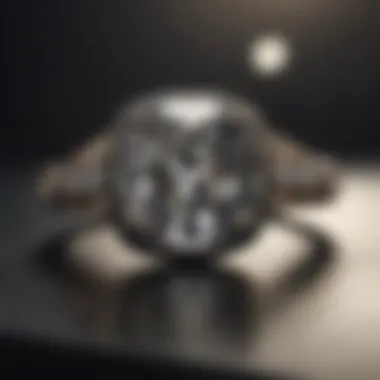

Consulting with Experts
Seeking guidance from gemologists or jewelers
Discussing the importance of seeking guidance from professionals in the field of gemology or jewelry making in this article sheds light on the value they bring to the table. By consulting with gemologists or jewelers, individuals can benefit from expert knowledge and insights that can elevate their engagement ring selection process. The key characteristic of seeking advice from these experts lies in their ability to provide personalized recommendations based on an individual's preferences, budget considerations, and the desired quality of the diamond. Emphasizing precision and expertise, consulting with gemologists or jewelers proves to be a beneficial choice for readers looking to make informed decisions regarding their engagement ring choices. Despite the advantages they offer in terms of specialized knowledge and tailored suggestions, it is essential to acknowledge any potential drawbacks, such as additional costs associated with professional consultations, ensuring a well-informed decision-making process for readers seeking expert guidance.
Exploring Ring Settings
Impact of different settings on perceived diamond size
Devoting attention to exploring the impact of various ring settings on the perceived size of a diamond plays a crucial role in guiding readers through the process of selecting an engagement ring. By examining how different settings affect the visual appearance of the diamond, readers can gain a deeper understanding of how to enhance the perceived size and brilliance of the stone. The key characteristic of this exploration lies in its ability to provide readers with insights on choosing the ideal setting that complements their desired carat weight and overall aesthetic preferences. Highlighting the intricacies of ring settings and their impact on the diamond's presentation, this discussion aims to assist readers in making informed decisions that align with their style and vision for the perfect engagement ring. While the advantages of exploring various ring settings include enhancing the overall appeal and perceived value of the diamond, potential disadvantages may arise in terms of maintenance or durability, requiring readers to carefully weigh their options and make choices that suit their needs and preferences.
Considering Diamond Shape
How shape influences visual impact and perceived size
Exploring the significance of diamond shape in influencing the visual impact and perceived size of the stone forms a pivotal aspect of this article's discussion on selecting the ideal carat weight for an engagement ring. By examining how different diamond shapes can affect the stone's appearance and presence on the finger, readers gain valuable insights into choosing a shape that resonates with their personal style and preferences. The key characteristic of this exploration is its ability to highlight the unique features of each diamond shape, offering readers a detailed perspective on how shape can impact the overall aesthetics of the ring. By showcasing the advantages and potential drawbacks of various diamond shapes, readers can make informed decisions that align with their vision for the perfect engagement ring. While the benefits of considering diamond shape include adding a personalized touch and enhancing the ring's visual appeal, individuals need to be mindful of potential disadvantages, such as certain shapes appearing larger or smaller than others, requiring thoughtful considerations for readers aiming to achieve a harmonious balance between shape and carat weight.
Conclusion
In the culmination of this in-depth discussion on determining the ideal carat weight for an engagement ring, the significance of selecting the perfect carat becomes profoundly clear. The engagement ring signifies a commitment and is a direct reflection of personal taste and style. Balancing personal preferences with practical considerations is crucial in ensuring the chosen carat weight resonates with the essence of the occasion. The weight of the carat carries both symbolic and aesthetic value that contributes to the overall impact of the ring. Understanding the significance of carat weight empowers individuals to make a thoughtful and informed decision that aligns with their lifestyle and budget constraints.
Final Thoughts on Carat Selection
Balancing personal preferences with practical considerations
Exploring the delicate equilibrium between personal preferences and practical considerations reveals a pivotal aspect of selecting the right carat weight for an engagement ring. The interplay between one's individual tastes, lifestyle demands, and the desired quality of the diamond creates a unique tapestry of considerations. Balancing these elements ensures that the chosen carat weight not only embodies personal style but also aligns with the practicalities of daily wear. This balance is essential in creating a ring that holds sentimental value while also remaining a practical choice for daily adornment. By harmonizing personal preferences with practical considerations, individuals can imbue their engagement ring with a sense of purpose and authenticity.
The significance of carat weight in the context of an engagement ring
Delving into the significance of carat weight unveils its intrinsic importance in the realm of engagement rings. The carat weight serves as a visual benchmark, dictating the size and presence of the diamond on the ring. It encapsulates the essence of grandeur and elegance, symbolizing the depth of commitment and love shared between partners. Choosing the right carat weight is not merely about aesthetics but also about capturing the emotional weight and significance of the moment. The carat weight plays a pivotal role in elevating the overall appeal of the ring, ensuring it becomes a timeless symbol of love and devotion. Understanding the profound significance of carat weight helps individuals craft a ring that transcends trends and stands the test of time.







